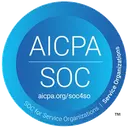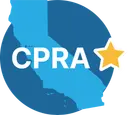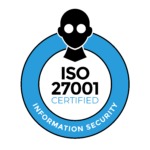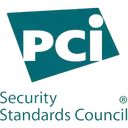Navigating the complex landscape of SOC 2 compliance requires understanding not just the security benefits, but also the financial investment required. For companies seeking to build trust with customers and partners, a SOC 2 report demonstrates your commitment to security—but the costs can vary dramatically based on multiple factors.
SOC 2 audit costs aren’t one-size-fits-all. Depending on your company size, scope, and approach, the investment can range from $20,000 for a small startup to well over $250,000 for complex enterprise organizations. Understanding these costs upfront helps you budget appropriately, avoid surprises, and make strategic decisions about your compliance journey.
This guide provides a comprehensive breakdown of SOC 2 audit costs and strategies to optimize your investment. We’ll explore typical price ranges based on company size, identify all cost components beyond just auditor fees, and share practical approaches to reduce expenses without compromising quality.
Whether you’re a startup preparing for your first SOC 2 or an established organization looking to streamline your compliance program, this article will help you understand:
- Realistic budget expectations for organizations of different sizes
- The complete set of costs beyond just the audit itself
- Key factors that can significantly increase or decrease your costs
- Strategic approaches to reduce expenses while maintaining compliance
- How to leverage automation and technology to minimize ongoing effort
Compliance shouldn’t slow your business down or drain your resources. With proper planning and the right approach, you can achieve SOC 2 compliance efficiently and cost-effectively, turning it from a necessary expense into a strategic business advantage.
Cost components
A SOC 2 audit is a significant investment, but understanding the various cost elements helps organizations plan their compliance budget effectively.
Readiness assessments are a critical first step in the SOC 2 journey. These evaluations typically range from $0 (if conducted internally) to $25,000 for a consultant-led assessment. They identify gaps between your current practices and SOC 2 requirements, creating a roadmap for your compliance efforts.
Remediation work often represents the largest variable cost in SOC 2 compliance. Depending on your organization’s maturity and existing controls, remediation can range from $5,000 for small companies with robust security practices to $250,000+ for larger organizations with significant gaps. This includes implementing new security controls, creating documentation, and developing policies.
Auditor fees form the core expense of SOC 2 certification. Type I audits typically range from $5,000-$40,000, while Type II audits (which require evidence of controls operating over time) cost between $15,000-$100,000+. Big Four accounting firms command premium rates, often exceeding $100,000 for complex engagements.
Compliance tools and platforms have become essential investments. These solutions automate evidence collection, monitor control effectiveness, and streamline the audit process. Annual subscriptions typically range from $3,000-$10,000 for startups to $10,000-$50,000+ for enterprises. While representing an additional cost, these tools often reduce overall compliance spending by minimizing internal effort.
Internal staff time is frequently the most overlooked cost component. First-time SOC 2 efforts typically require 100-300+ hours of staff time across security, engineering, legal, and operations teams. This opportunity cost represents approximately $20,000-$150,000 in salary burden, depending on team seniority and program duration.
Factors influencing cost
The cost of SOC 2 certification varies significantly based on several key factors that organizations should consider when budgeting.
Company size and complexity directly impact both auditor fees and preparation efforts. Larger organizations with multiple systems, locations, and departments typically face higher costs due to increased audit scope and sampling requirements. A 1,000-employee enterprise might spend 5-10x what a 10-person startup would on their SOC 2 program.
The type of audit you pursue significantly affects cost and timeline. Type I audits (point-in-time assessments) are less expensive than Type II audits (evaluations over a period, typically 6-12 months). While Type I provides a quicker path to initial compliance, most enterprise customers eventually require Type II reports.
Trust Services Criteria selection dramatically influences audit scope. Security is the only required criterion, but many organizations add Availability, Confidentiality, Processing Integrity, or Privacy based on customer requirements. Each additional criterion increases testing complexity and cost by approximately 15-30%.
Geographic complexity creates additional audit considerations. Organizations with multiple physical locations or teams distributed across different countries face higher costs due to increased control sampling and potentially different regulatory considerations. International operations can increase audit costs by 25-50%.
Your technology environment’s complexity directly affects audit scope. Multi-cloud deployments, hybrid infrastructure, and legacy systems all increase the number of controls requiring testing. Cloud-native organizations with streamlined technology stacks typically face lower compliance costs than those managing diverse infrastructure.
Auditor selection significantly impacts both cost and perceived report value. Big Four firms and specialized national practices command premium rates but may provide greater stakeholder confidence. Regional firms typically offer more competitive pricing but may require explaining their credibility to customers. The difference can range from 30-100% in fee structure.
Compliance maturity determines remediation requirements. Organizations with existing governance frameworks (like ISO 27001) or mature security programs require less remediation work. Starting from scratch typically means higher costs for policy development, control implementation, and security tooling.
Customer requirements drive scope decisions. Some industries and enterprise customers mandate specific Trust Services Criteria or control implementations that exceed standard requirements. Understanding these expectations early helps avoid scope expansion and unexpected costs during the audit process.
Example scenarios
Startups and small businesses face different cost dynamics than enterprises. Let’s explore a few typical scenarios to give you a clearer picture of what to expect based on your organization’s size and complexity.
Early-stage SaaS startup with 15 engineers on AWS: This company needs SOC 2 to close enterprise deals and focuses on Security only with a Type II report using a short observation window.
Their budget breakdown typically looks like:
- Readiness assessment and gap analysis: $5,000-15,000
- Compliance automation platform (startup tier): $3,000-10,000 annually
- Auditor fee (often through a startup program): $15,000-40,000
- Internal staff time (100-150 hours): equivalent to $15,000-30,000
- Total first-year budget: $40,000-100,000
Their time to completion generally ranges from 3-6 months, leveraging automation and limited scope to accelerate the process.
Mid-market fintech company (150 employees) handling sensitive data: This organization needs to cover Security, Confidentiality, and Privacy criteria for their Type II report.
Their typical costs include:
- Readiness consulting and remediation: $15,000-60,000
- Automation platform and continuous monitoring: $10,000-30,000 annually
- Required penetration testing: $8,000-30,000
- Auditor fee (mid-tier firm): $40,000-120,000
- Internal staff opportunity cost: $40,000-120,000
- Total first-year investment: $120,000-350,000
Their timeline typically extends to 6-12 months due to broader scope and more complex environments.
Large healthcare technology enterprise (1,000+ employees) with PHI: This company requires comprehensive coverage including alignment with HIPAA across multiple locations.
Their budget typically includes:
- Extensive readiness and remediation: $100,000-500,000+
- Enterprise automation and security monitoring: $50,000-300,000+ annually
- Comprehensive security testing: $25,000-200,000+
- Auditor fee (typically Big Four): $150,000-400,000+
- Total program investment: commonly mid-six to low-seven figures
Their timeline often extends to 9-18+ months to complete planning, remediation, observation window, and reporting phases.
The key cost variables across these scenarios are scope, complexity, and maturity. Organizations with established security programs and documented controls face lower remediation costs. Those choosing automation platforms typically see faster completion times and reduced internal burden, though this creates a recurring subscription cost.
Cost-saving tips
Start with a narrow scope. Beginning your SOC 2 journey with a Security-only Type I report can significantly reduce your initial costs while still demonstrating compliance commitment to customers. You can expand to additional Trust Services Criteria and Type II as your business grows and customer requirements evolve.
Leverage automation to reduce manual effort. Compliance automation platforms dramatically reduce the time your team spends collecting and organizing evidence. These tools connect directly to your cloud infrastructure and business applications, continuously monitoring controls and gathering evidence that would otherwise require hundreds of staff hours.
Prepare thoroughly before engaging auditors. Complete a self-assessment and address obvious gaps before bringing in an auditor. The more prepared you are, the less time auditors will spend on fieldwork, directly reducing their billable hours and your final invoice.
Choose the right-sized auditor for your business. While Big Four firms may appeal to enterprise customers, smaller specialized audit firms often provide equivalent attestation value at significantly lower price points. Consider regional firms with strong SOC 2 experience for substantial savings without sacrificing report credibility.
Negotiate multi-year audit engagements. Many audit firms offer discounted rates for clients who commit to multi-year relationships. These arrangements can reduce your per-audit costs by 10-30% while providing predictable compliance budgeting for future years.
Maximize control reuse across frameworks. If your organization needs multiple compliance frameworks (like ISO 27001, HIPAA, or GDPR), design your control environment to satisfy multiple requirements simultaneously. This “implement once, comply many” approach reduces duplicate work and maximizes your compliance investment.
Consider a readiness assessment before a full audit. A formal readiness assessment costs significantly less than a failed audit. This step identifies control gaps before you’re “on the clock” with your auditor, preventing expensive scope expansions and rework during the formal audit process.
Conclusion
A SOC 2 audit represents more than just a compliance checkbox—it demonstrates your commitment to security and builds customer trust. While costs can vary significantly based on your organization’s size, complexity, and readiness, proper planning makes the investment both manageable and valuable.
The most successful SOC 2 programs treat compliance as an ongoing business process rather than a one-time project. By implementing continuous monitoring, automating evidence collection, and choosing the right audit partners, you can significantly reduce both initial and ongoing compliance costs.
Thoropass helps organizations achieve SOC 2 compliance efficiently through our unique approach that combines automation with expert guidance. Our platform streamlines evidence collection while our compliance experts provide the strategic direction to avoid common pitfalls that drive up audit costs.
Unlike other compliance solutions, Thoropass doesn’t leave you to figure things out on your own. We partner with you throughout your compliance journey, providing clear guidance on scope decisions, control implementation, and auditor selection—all factors that directly impact your bottom line.
Schedule a consultation with Thoropass today to discover how our approach can help you achieve SOC 2 compliance efficiently and cost-effectively.

Related Posts
Stay connected
Subscribe to receive new blog articles and updates from Thoropass in your inbox.
Want to join our team?
Help Thoropass ensure that compliance never gets in the way of innovation.












.png)